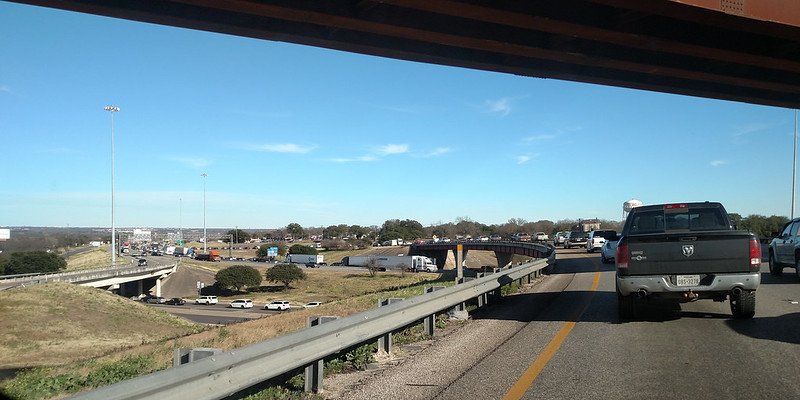Few things provide a lesson in urban banality like driving from one Texas city to another along Interstate 35. Over the past two months, I’ve found myself resigned to this unfortunate experience several times for trips to Houston, San Antonio, Garland, and Dallas, and then back to Waco each time. If I’m driving alone, the trips become a race against despair as I find myself contemplating the powerlessness of my dilemma: believing whole-heartedly in the need for better city design, fewer highways, and multimodal transit, yet stuck in the system as it is and forced to play according to its terms.
It is on the highway that I feel this powerlessness and rage most acutely, not just for the growing width of the highways themselves, but also for the lack of vision when it comes to the what lines the highways. The mind-numbing repetition of chain stores, massive gas stations, self-storage facilities, and fast food joints has me and my husband nearly ready to take the longer but more scenic routes from now on. We are at a loss to understand the seemingly insatiable desire to develop every possible parcel of land along the highway and stuff it with the same cookie-cutter businesses.
It’s an approach to city-building that afflicts not just our highways but our cities themselves. Increasingly, it seems our cities are developed with an extremely narrow vision of human life, built in a cookie-cutter, predictable, highly generic fashion with an emphasis on consumerism and little regard for quality or permanence, all while erasing the distinct identity of the city along the way.
This throw-away attitude model of “investment,” with its emphasis on quick cash, predictability, and consumerism is completely opposite to the historic model. Historically, as cities became wealthier and more established, residents demonstrated their wealth and their investment in the city by building lavish homes and beautiful public spaces, like libraries and schools. Commissioning large, beautiful fixtures around town was the ultimate way to signal commitment and pride toward the city.
I saw a most wonderful example of this historic model during a recent trip to Galveston, Texas. We had journeyed to Houston for a family event and, in an effort to scrub our brains from the experience of crawling about 5 mph along the highway, we decided to spend the night in the beachside town of Galveston and explore its historic neighborhoods.
To be honest, we didn’t pick the best weekend for our trip: We arrived in Galveston just in time for a frigid storm, but we bundled up anyway the next morning and headed to the city’s core after finding amazing bagel sandwiches at Galveston Bagel Company and coffee at Red Light Coffee House.
The minute we arrived in the neighborhood, my jaw dropped in amazement. With the exception of my time living in Providence, Rhode Island, I had never seen such an eclectic combination of funky, ornate, over-the-top Victorian homes… Whole streets full of them! I jumped out of the car and snapped photos while Rob rolled our Honda Pilot to the next corner. We finally ended up just parking the car and walking the neighborhood, stopping frequently to read some of the historic plaques.
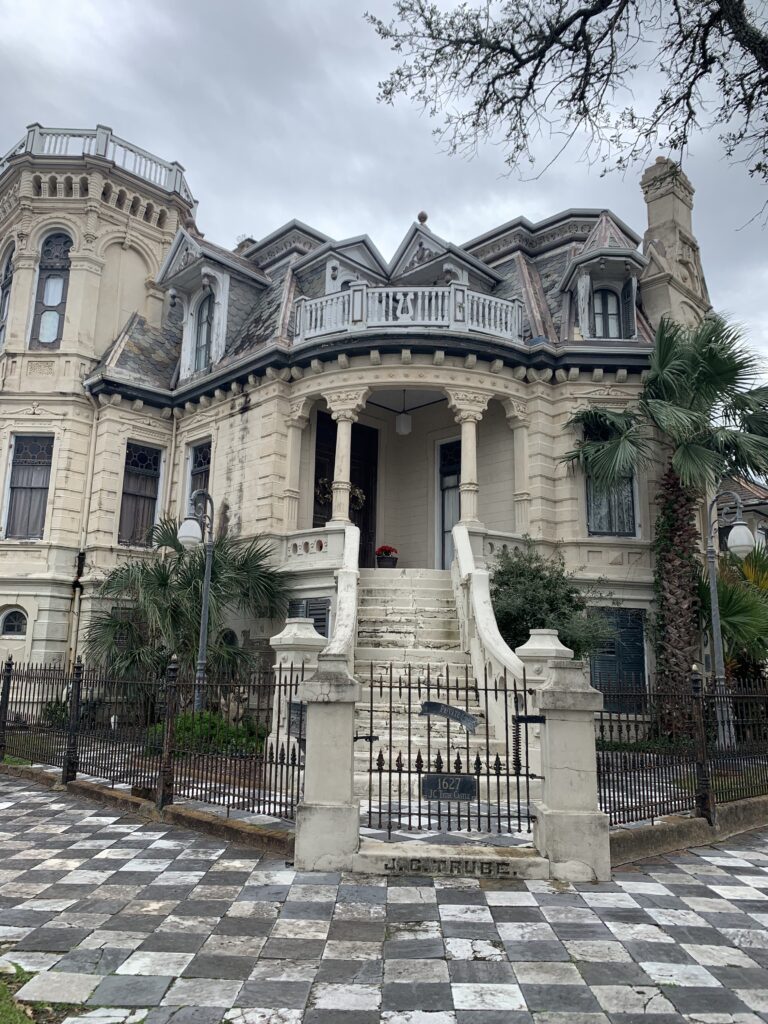
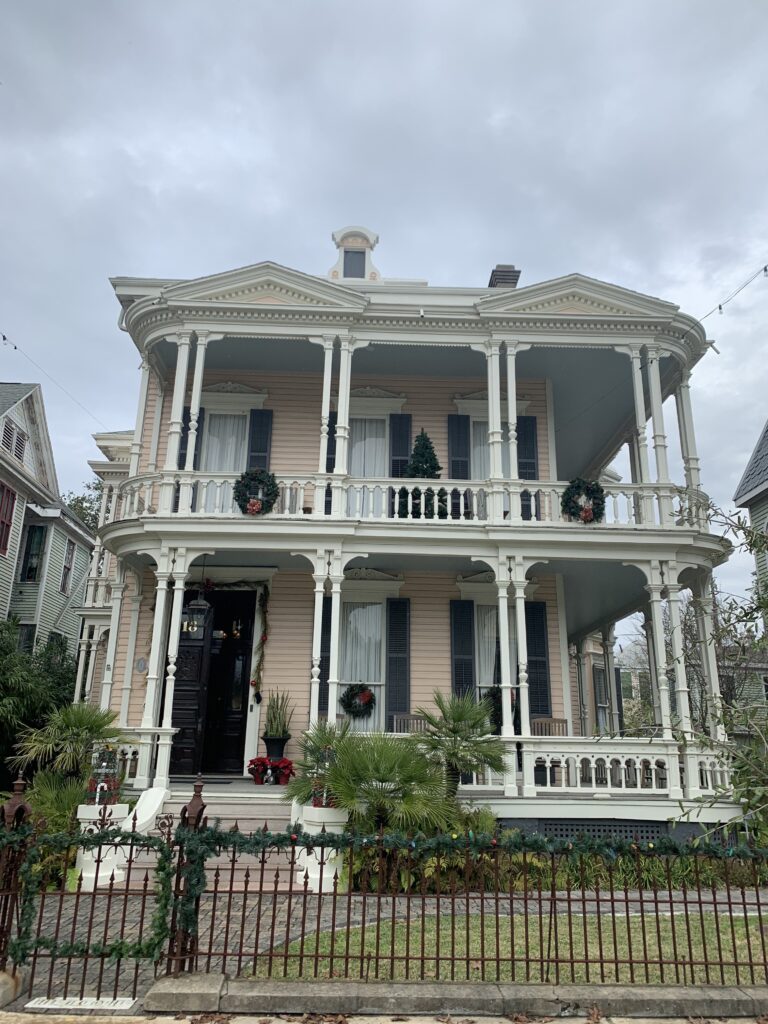
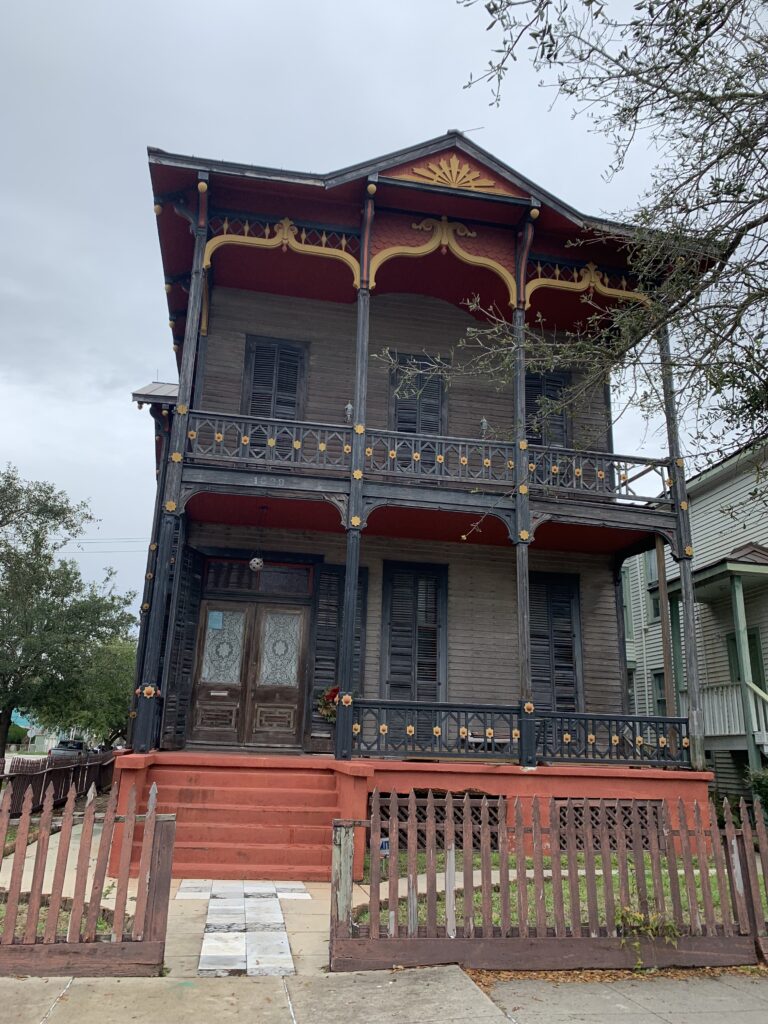
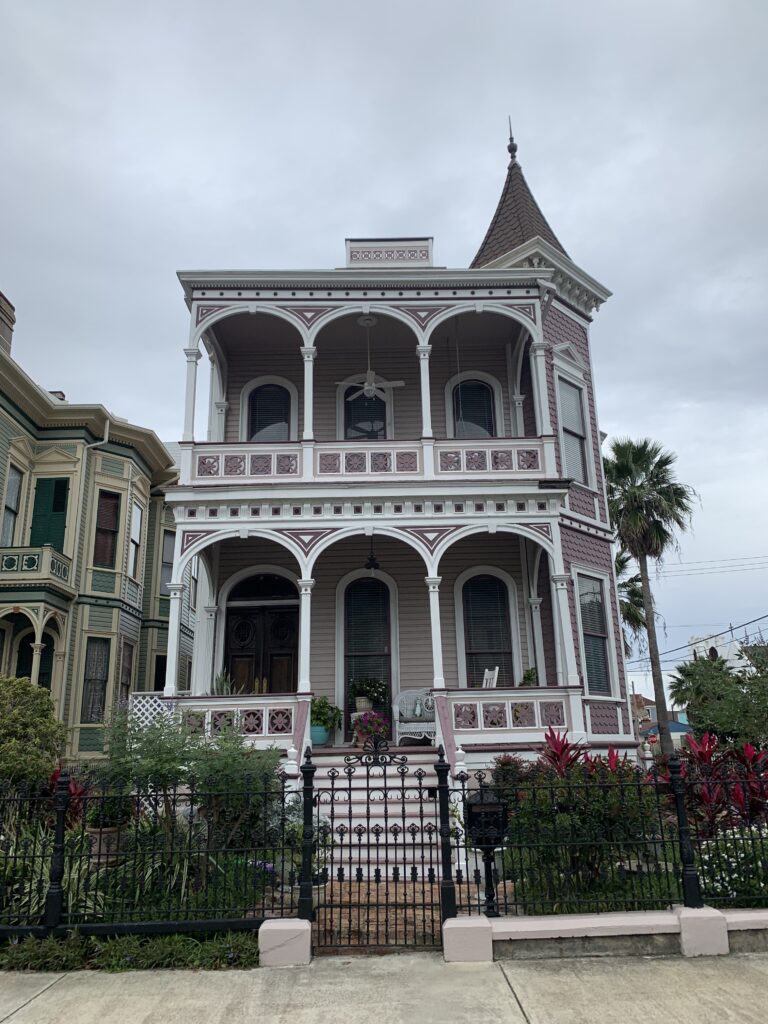
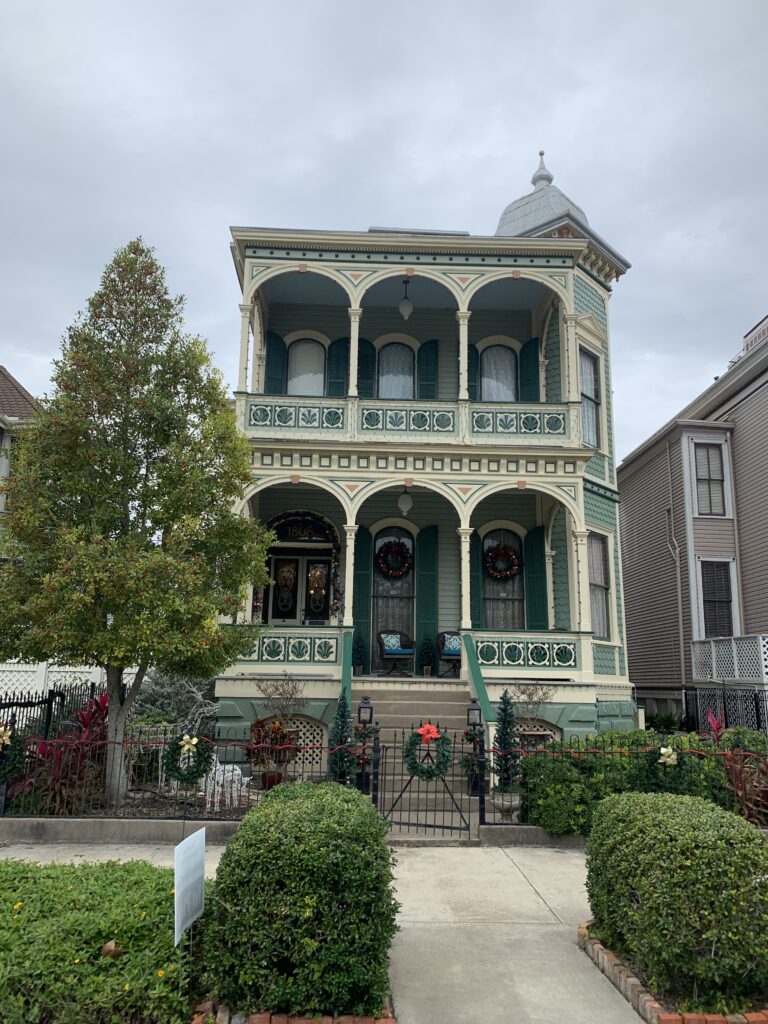
Plaque after plaque revealed a similar pattern: an individual, usually an immigrant, arrived in Galveston, participated successfully in some kind of industry and then took a portion of their wealth to build this beautiful home. These homes anchored the small town with a sense of distinction and pride, as well as visual appeal. The architecture of these homes makes the city’s story and identity visible in a way that generic architecture never could.
On our drive home, I wondered to myself what had happened to this attitude toward architecture and design in other places around the U.S. “Whatever happened to beauty,” I wondered, staring at the heartless strip malls flying by our window in a blur. By asking what happened to beauty, I’m asking what happened to seeing our places as extensions of ourselves, of our homes, of our values.
At the heart of this type of stewardship is the recognition that part of being human means to be connected to place—it’s as much a part of being human as being in our own bodies. We see this in ancient literature, with people described in part as from a particular place or region. In our modern times, I think this is the intuition baked into the question, “Where are you from?”
Growing up, I hated this question; we grew up moving so much that I didn’t really feel connected to any place and it felt to me like mere small talk. But now I wonder if there’s more richness to this harmless question than I realized. Perhaps in asking where we are from, we are acknowledging this primal connection between one’s sense of self and the land, the town, the city we call home. No matter how many times we move around, we are always in constant dialogue with space and place; it shapes us and we shape it back.
Looking at the average North American city these days, it’s clear to me that we’ve lost this intuition. The reversed model of investment, the architectural homogeneity, the monotonously predictable patterns of development all point to a lost sense of our cities as home, as an expressive realm that tells the story of who we are as individuals and as a community. A realm toward which we have duties. And beauty—the ultimate expression of stewardship—gets lost, as a result.
I recently stumbled upon this video about a radically transformed commune outside of Paris. During 40 years of Communist rule, Le Plessis-Robinson fell subject to the principles of Socialist housing policy and Soviet architecture. It became a hub of ugly gray buildings, poverty, and blight. This all changed with the 1989 election of Philippe Pemezec as Mayor. He embarked on an ambitious multi-decade initiative to revitalize the town in collaboration with French architects François Henry Spoerry and Xavier Bohl. The resulting New Urbanist town went on to win several awards.
Stories like this are possible anywhere where people recognize the principles that lead to truly human-centric environments, but also in places where residents see their towns as extensions of themselves, and as extensions of their own home.
It’s one thing to advocate for ideas and initiatives like safe streets, no new highways, and infill development because they are good ideas. It’s another thing to pursue these ideas because we see our city as more than a combination of buildings and architecture; we see it, in the words of Jane Jacobs, as “a container for human life.”
